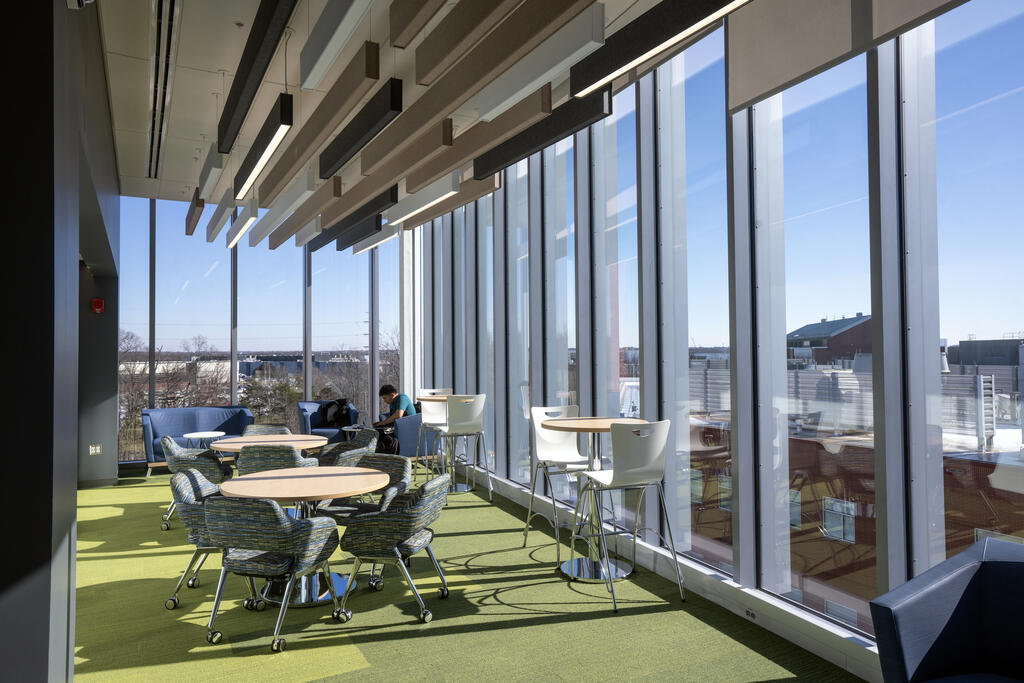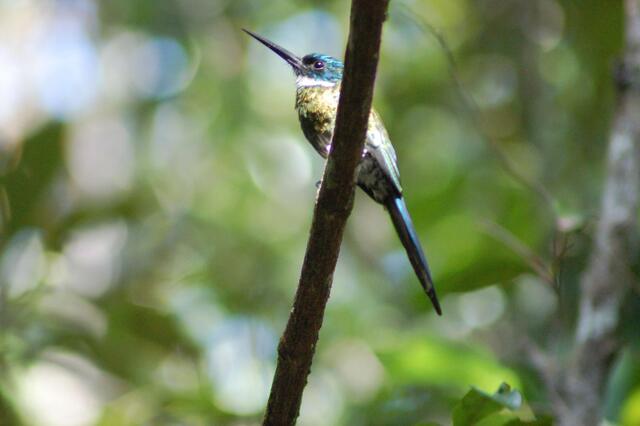Admission CTAs
Mason study shows conservation of large areas will help protect the Amazon’s birds
As the most biodiverse place on Earth, the Amazon Rainforest attracts scientists from around the world seeking to understand its diversity and also ways to protect it from outside forces like deforestation. A recent study led by George Mason University postdoc and conservation ecologist, Cameron Rutt, says that conserving large areas of upland rainforest support the richness and survival of the region’s birds.
Additional researchers involved in the study include David Luther and W. Justin Cooper from George Mason University’s Department of Biology, Philip Stouffer from Louisiana State University, as well as Christian Andretti, Thiago Costa, Claudeir Vargas, and Mario Cohn-Haft from the Tropical Ecology Assessment and Monitoring Network.
Ecologists often look to environmental differences like mountains and rivers to explain different biological communities and believe that differences in habitat play an important role in determining the local and regional composition of birds. This study set out to test the complementary assumption that seemingly uniform areas without environmental barriers (such as a large river) would likely house similar bird communities.
The recent study, published in Diversity and Distributions, analyzed 3000 bird surveys from the Tropical Ecology Assessment and Monitoring Network to test and confirm those suspicions. The team compared bird communities in three pairs of 100-hectare plots (each of which is equivalent to roughly 45 Manhattan city blocks), ultimately detecting 244 forest-dependent birds, with an average of 190 species per plot. They concluded that in forests without environmental barriers, communities of birds appear almost identical within that space, no matter where you travel. This supports what Luther describes as the classic biogeographic pattern for birds—that uniform areas offering uninterrupted travel do not result in high species turnover.
The study also notes decreases in regional bird populations within a large forest preserve on the outskirts of Manaus, a city of ~2.5 million people located in the middle of the Amazon Rainforest. According to Rutt, certain species of birds in that region are known to be more susceptible to broken or divided forest areas. “It tells us that even in a place as big as the Amazon Rainforest, we can still lose species because of deforestation that occurs outside large reserves, which is essential information for conversations around conservation efforts,” he said.
And what does that then mean for conservation efforts? According to Luther, the study provides strong evidence for the need to preserve much larger areas of lowland tropical rainforest to secure the future of the entire bird community.
“At any one location in the Amazon, you may be able to find up to 300 species of birds,” Luther said. “To put that into context, most places in Virginia will have something more like 30 species. It’s important to take steps now to protect them.”
The study’s release coincidentally comes out as President Biden and Brazilian President Luiz Inácio Lula da Silva continue to have discussions about ways to slow or halt forces that threaten the Amazon and stop the record-breaking levels of deforestation

